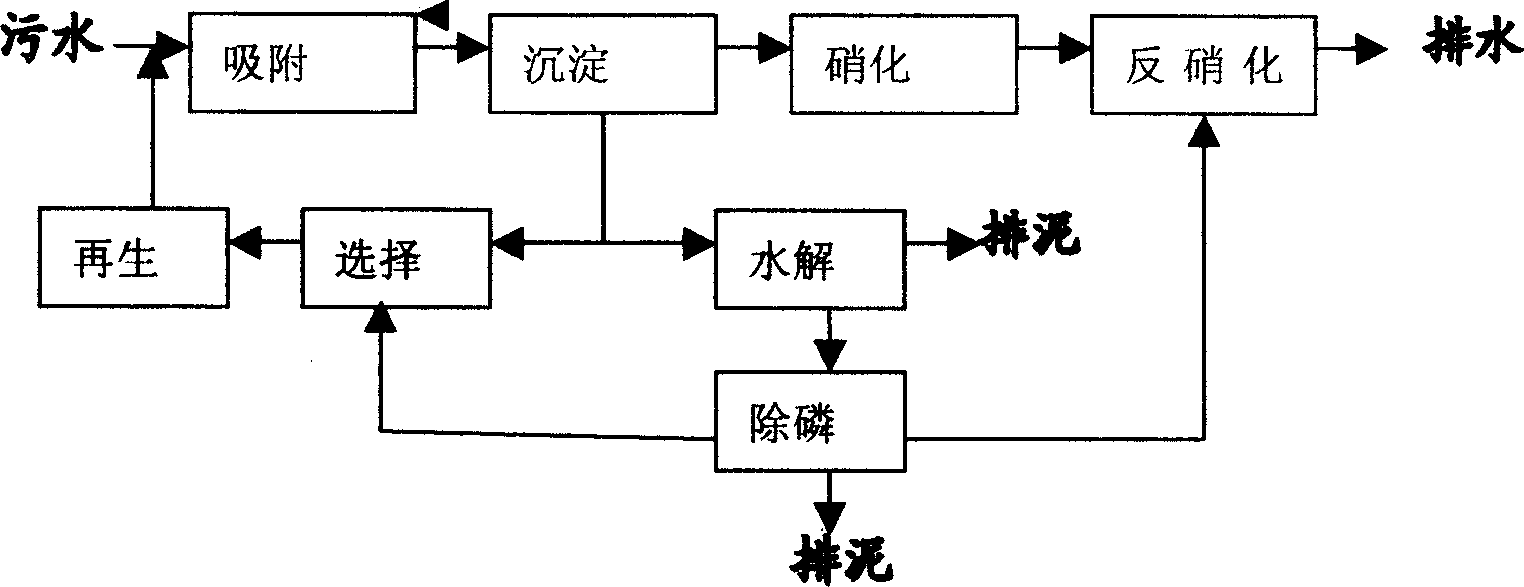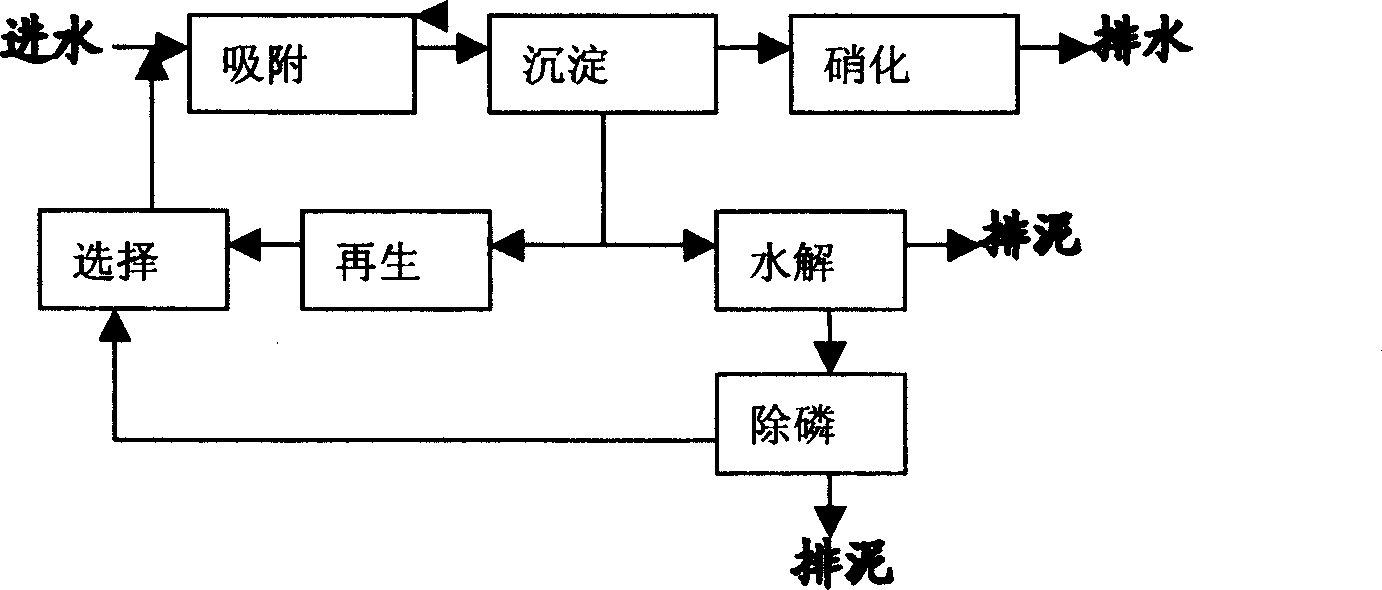Bio-treatment method for dephosphorization and denitrogenation of sewage
A biological treatment and sewage technology, which is applied in the field of biological treatment of phosphorus and nitrogen removal in sewage, can solve the problems of reduced efficiency of nitrogen and phosphorus removal, and achieve the effects of increased oxygenation efficiency, reduced residence time, and reduced amount of rapidly degraded organic matter
- Summary
- Abstract
- Description
- Claims
- Application Information
AI Technical Summary
Problems solved by technology
Method used
Image
Examples
Embodiment 1
[0029] see figure 1 .
[0030] The system consists of adsorption tank, sedimentation tank, regeneration tank, selection tank, phosphorus removal tank, nitrification tank, denitrification tank and hydrolytic acidification tank. The sewage first enters the adsorption tank, mixes with the sludge returned from the regeneration tank, and is removed by adsorption and other processes. For particulate pollutants in the sewage, the aerator is used to aerate, so that the dissolved oxygen concentration in the adsorption tank is 0.2-0.5mg / l, and the sewage residence time is 45 minutes. The mixed liquid is discharged from the adsorption tank to the sedimentation tank. The residence time of the sedimentation tank is 2 hours to realize the separation of mud and water. The supernatant enters the biological aerated filter for nitrification, and then enters the denitrification biological aerated filter to realize denitrification. The residence time is respectively 1 hour and 1.5 hours. 70% of...
Embodiment 2
[0032] see figure 2 .
[0033] The system consists of adsorption tank, sedimentation tank, regeneration tank, selection tank, dephosphorization tank, nitrification tank and hydrolytic acidification tank. The sewage first enters the adsorption tank, mixes with the sludge returned from the selection tank, and removes the particulate matter in the sewage through adsorption and other processes. Pollutants are aerated with an aerator, so that the dissolved oxygen concentration in the adsorption tank is 0.2-0.5mg / l, and the residence time of sewage is 45 minutes. The mixed liquid is discharged from the adsorption tank to the sedimentation tank. The residence time of the sedimentation tank is 2 hours to realize the separation of mud and water. The supernatant enters the biological aerated filter for nitrification and the residence time is 1 hour. The effluent is directly discharged into the natural water body. The remaining sludge discharged from the sedimentation tank, accounting ...
Embodiment 3
[0035] see image 3 .
[0036] The system is composed of adsorption tank, sedimentation tank, regeneration tank, nitrification tank, denitrification tank and hydrolytic acidification tank. The sewage first enters the adsorption tank, mixes with the sludge returned from the regeneration tank, and removes particulate pollutants in the sewage through adsorption and other processes. Use the aerator to aerate, so that the concentration of dissolved oxygen in the adsorption tank is 0.2-0.5 mg / l, and the residence time of sewage is 45 minutes. The mixed liquid is discharged from the adsorption tank to the sedimentation tank. The residence time of the sedimentation tank is 2 hours to realize the separation of mud and water. The supernatant enters the biological aerated filter for nitrification, and then enters the denitrification biological aerated filter to realize denitrification. The residence time is respectively 1 hour and 1.5 hours. 70% of the sludge discharged from the sedime...
PUM
 Login to View More
Login to View More Abstract
Description
Claims
Application Information
 Login to View More
Login to View More - R&D
- Intellectual Property
- Life Sciences
- Materials
- Tech Scout
- Unparalleled Data Quality
- Higher Quality Content
- 60% Fewer Hallucinations
Browse by: Latest US Patents, China's latest patents, Technical Efficacy Thesaurus, Application Domain, Technology Topic, Popular Technical Reports.
© 2025 PatSnap. All rights reserved.Legal|Privacy policy|Modern Slavery Act Transparency Statement|Sitemap|About US| Contact US: help@patsnap.com



